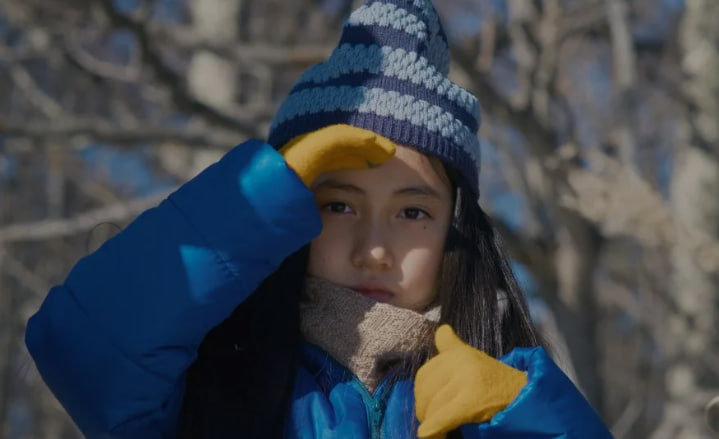I saw Ryûsuke Hamaguchi’s latest opus, Evil Does Not Exist (Aku wa sonzai shinai), midway through the Venice Film Festival. Up until that point it seemed obvious that the comedy drama Poor Things, the new movie from Yorgos Lanthimos, was the only possible candidate to be seriously considered for the international prize. Poor Things was, ably directed, wildly funny and featured Emma Stone as a revamped Frankenstein’s monster who cavorted her way around 19th century Europe in a ribald romp that said huge things about women’s power, male suppression and the lies of a so-called civilised society. Poor Things appeared to exist in a category of its own, far above other desultory competition contenders such as Michael Mann’s weedy Ferrari or Luc Besson’s preposterous Dogman.
But then came Evil Does Not Exist, and the game, and the pace, suddenly changed. To say that Hamguchi’s film is “meditative” is an understatement. Two enormous central scenes that fundamentally anchor the film are built around the slow and serious chopping of wood and the filling of stream water into large plastic jerry cans. And that’s all. The film is about the environmental threat posed to an idyllic rural village, Mizubiki, just two hours outside of Tokyo. This sleepy, low-key place, home to hard-working, nature-loving and taciturn Takumi (newcomer Hitoshi Omika), is the target for a development company keen on constructing an enormous tourist site for “glamping”. The proposed build will destroy a traditional deer path and pollute the town’s ancient and invaluable water table – the water sourced in the aforementioned jerry cans is used for cooking noodles in the local restaurant.
As with all Hamaguchi films (see also Drive My Car and Happy Hour), there are no explicit villains or simplistic archetypes here. The developers, initially crass figures of fun, soon become sympathetic. And Takumi, an obvious nature-loving hero, eventually offers shades of complexity and doubt. The final act, nonetheless, builds slowly, and with increasing intensity, into a more conventional missing person’s drama, with a sickening sense of tension at its heart. That crisis is resolved in the very final scene with an ambiguity and jarring artifice that I found, at the time, in the moment, wildly frustrating.
I emerged from that screening in a rage. “How could he?” I thought. “How could he betray all that previous nuance, and all that contemplative filmmaking, with four of five simply framed yet quietly confusing shots, one after another, which appeared to say that a pivotal figure had committed murder – an unprovoked attack, irrational and bizarre?”
I sat with the film for a day. I replayed the final scene, in my mind, on a loop. There’s a shot of a wounded animal. A shot of a child. Then of a man. Then seemingly a murder. Then a body. Then it’s over. Yes, I was convinced. The film that I had loved as it unfolded, even more than Poor Things, had ultimately betrayed me, in the last three minutes, with an illogical murder sequence.
And then I met my fellow FIPRESCI judges. “What about that ending?” I said. “Outrageous, right? What a mistake to end on a murder?” My first fellow judge turned and said, no, that wasn’t murder at all. It was an act of grief from a character fallen to the floor with sadness, and shocked from the loss of a loved one. “Oh, really?”
No, said my second fellow judge. That wasn’t an act of grief either. It was merely a physical embrace executed by a lonely character who had been haunted, for the entire film, by a ghost, and had shared the film, and everyone one of his frames, with the living dead.
Wait a minute? Three different interpretations from three different critics? What do we do? What do we call that? In the silence of stalemate, the penny suddenly dropped. And it was thrilling. This is, in fact, filmmaking at its devious best. This is filmmaking that is glaringly, conspicuously, alive. Hamaguchi has orchestrated a remarkably fluid ending, the true meaning of which lives only, and exclusively, in the mind of each individual viewer. He said as much later that week, when he collected his rightfully earned FIPRESCI Prize, and promised that, at some vague and unspecified point in the far future, he would perhaps elaborate further on his own intention with that climax.
But for now, and for the foreseeable future, it lives on as the most exquisitely malleable denouement to any contemporary movie, and a narrative conclusion tailor-made for the modern world of vlogs, blogs, and personalised media relationships. Go see the movie. Bring your own ending. How can you resist?
Kevin Maher
Edited by Rita Di Santo
© FIPRESCI 2023

